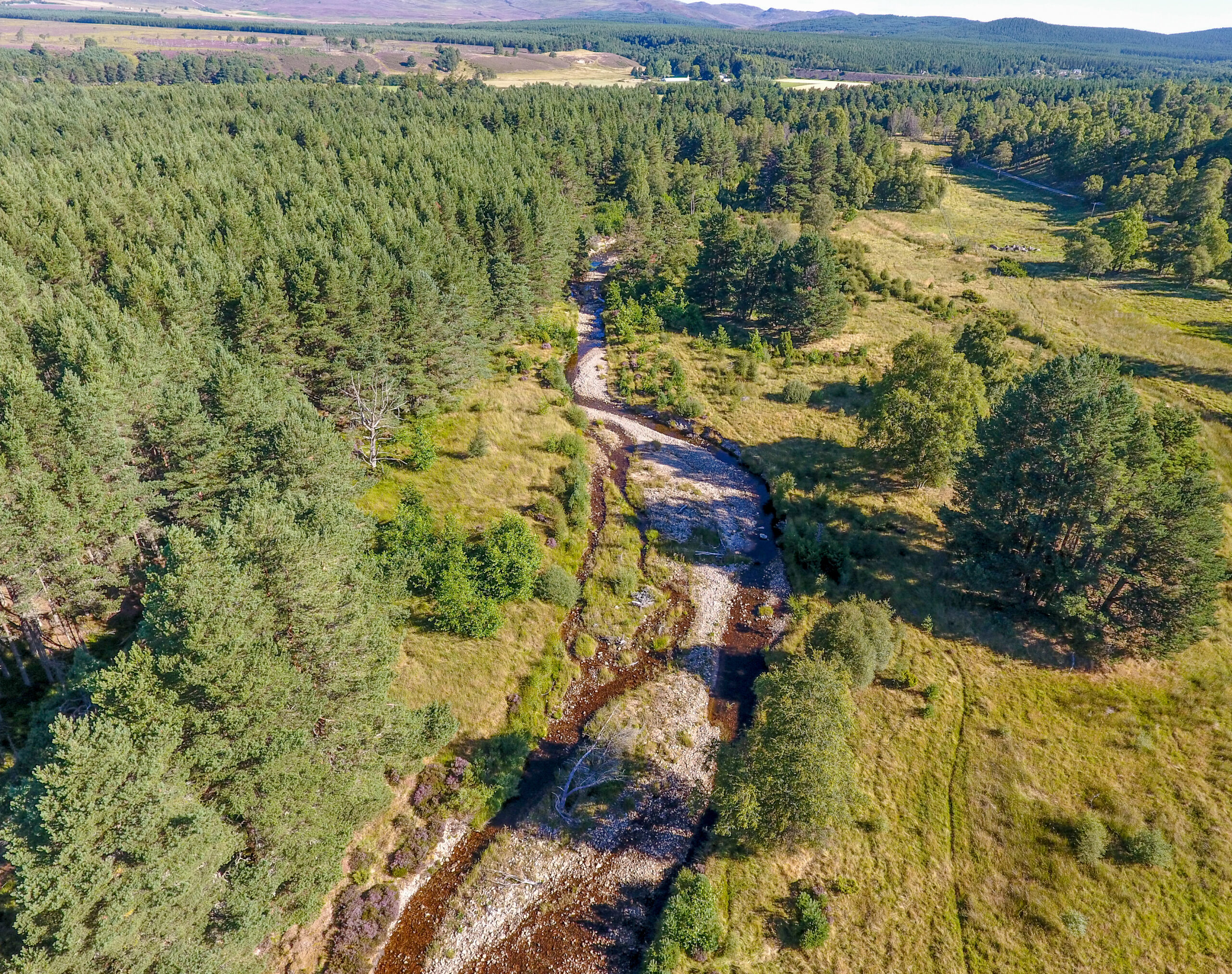Revamping riverbank woodland to reduce erosion and restore the riverside environment.
Parts of the River Spey at Kinchurdy Farm were in a poor condition due to livestock-induced erosion of the banks and under threat from diffuse polluton from sediment-laden runoff. The affected river banks underwent a transformation beginning in spring 2018 and continuing in two further phases until winter 2019/2020. The Spey Catchment Initiative, in collaboration with Reidhaven Estates, aimed to restore the riparian zone by excluding livestock and promoting the growth of native broadleaf trees. The goal was to create a naturally distributed, low density woodland spanning 7.5 km from the Boat of Garten bridge to Dalfaber.
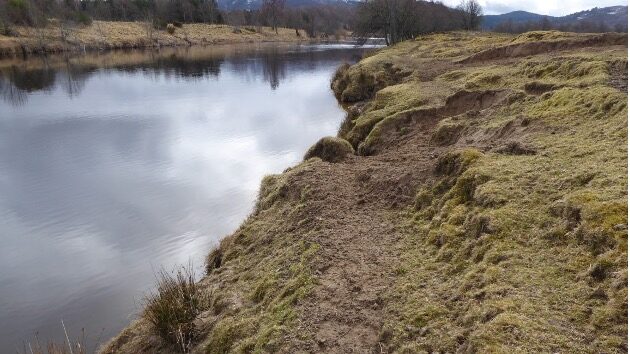
Before: March 2018
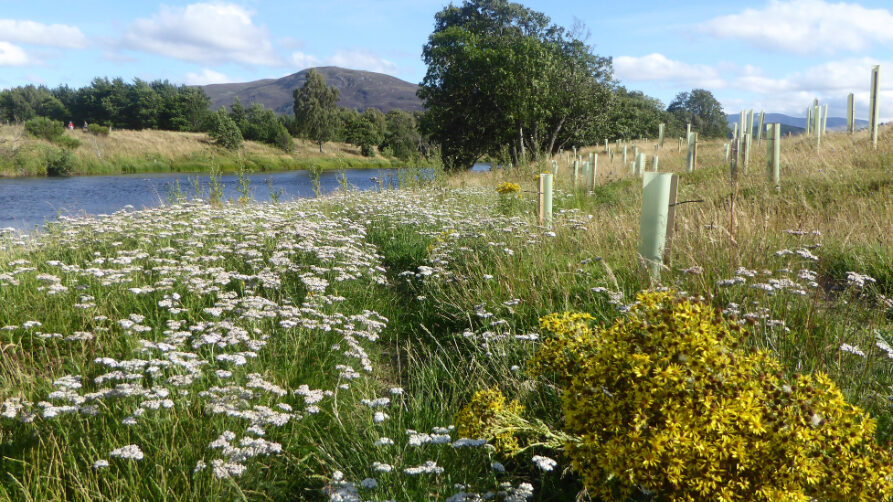
After: August 2018
Project Delivery: What did we do?
The project at Kinchurdy Farm, completed in 2020, revolved around two pivotal conservation strategies:
1. Fencing for Riverbank Protection
We installed nearly 4.5 kilometres of stock fencing to create a livestock-free buffer strip along the river bank. This allowed the riverbank to naturally stabilise and encouraged the growth of plant life by removing grazing pressure.
2. Tree Planting for Habitat Restoration and expansion
Within these protected zones, we planted around 5,000 mixed broadleaf trees to establish a vibrant, diverse and continuous riparian corridor.
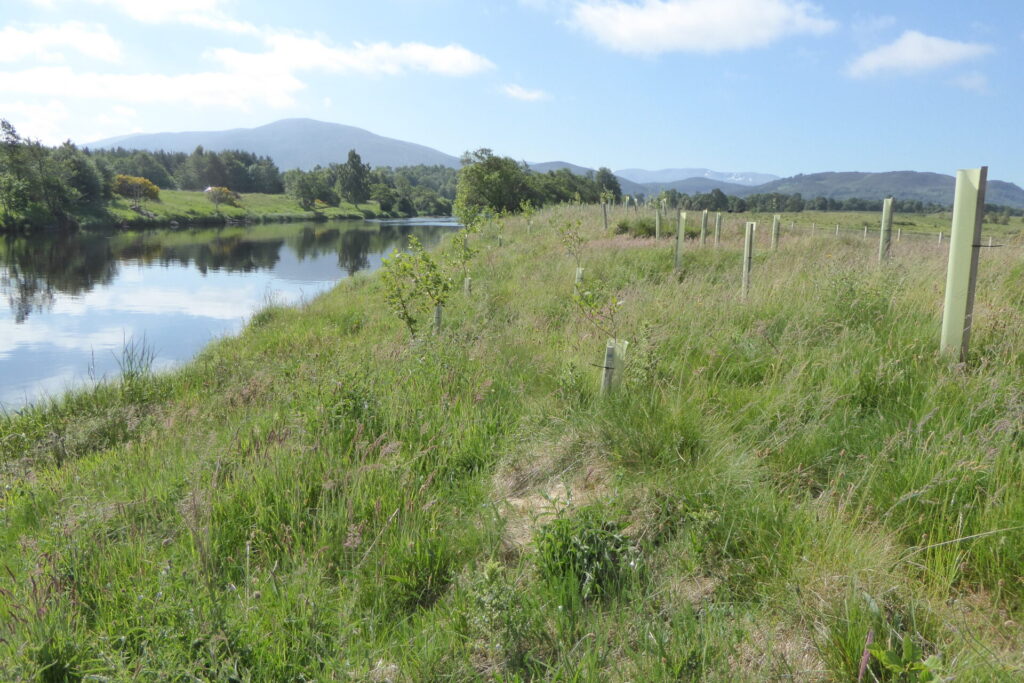
What are the Benefits of this Project?
1. New riparian habitats
The development of new woodland and the resurgence of riparian vegetation along the River Spey at Kinchurdy Farm has helped take what was bare and eroded riverbank and created the potential for recovery of a rich tapestry of biodiversity.
As it establishes, this thriving woodland will not only stabilise the river bank but will also form vital habitat for a wide range of plant, invertebrate, bird and mammal species as well as ensuring connectivity and natural migration pathways for wildlife.
2. Water Quality and in-stream Habitat Improvement
By eliminating livestock poaching that causes sediment runoff this project will improve water quality and reduce fine silt build-up in the river bed cobbles and gravels. This improvement is essential for species such as the Fresh Water Pearl Mussels, which are sensitive to siltation and poor water quality. The quality of habitats in the river channel for all aquatic life will be maintained and safeguarded, contributing to the ecosystem’s long-term sustainability.
3. Thermal Regulation and Species Protection
The developing woodland canopy provides essential shade over the River Spey, significantly reducing water temperatures during the summer months. This shading effect creates small areas of cooler water around and under the banks (‘thermal refuges’), crucial for Atlantic salmon, which are at risk of heat stress due to the longer and more intense warm spells brought on by the climate crisis. Cooler waters create a more hospitable environment for many species, aiding in their survival and contributing to the resilience of the river’s ecosystem.
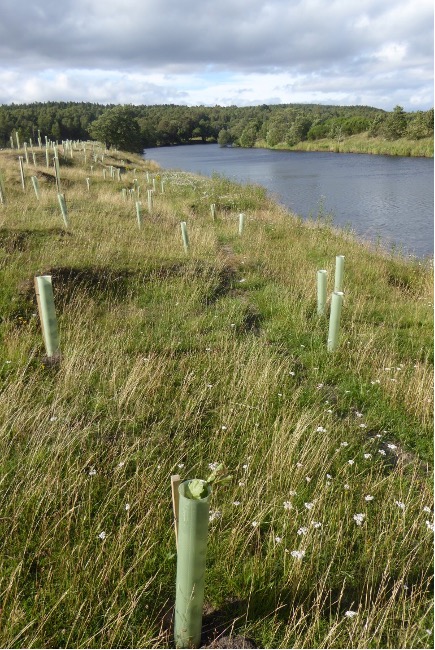
Learn more about this project
Deep dive into this project by downloading the full project report below.
Or for further inquiries, collaboration, or additional information about the project, please email Penny Lawson, SCI Project Officer.
Our Fantastic Project Partners

We would like to thank Reidhaven Estates, the Cairngorms National Park Authority, and other partners without whom this project would not have been possible.


